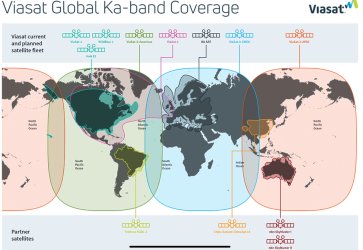I wasn’t referring to the difference in tech (I actually said they were competing technologies), I was just saying I don’t know why QR gets a pass for rolling out its Starlink but QF gets slammed for rolling out viasat. Both airlines have aircraft with coverage and a lot of aircraft without. Both will take time to rollout.
Viasat have announced they are doing LEO as well so I don’t know how anyone can say they will be inferior. I predict it will be a Coke/Pepsi situation in the fullness of time.
How long has QFd had wifi? It’s been many years now. Fantastic service that has always been free. I’m sure glad they didn’t wait for Starlink, and domestic is where people want wifi the most.
The Musk factor has brought a huge cloud over the future of Tesla, and the question is whether that will extend to Starlink. Not hard to see why a lot of customers will choose Viasat especially as it has held most of the inflight internet contracts for a long time.
The tech is the reason for the difference in views between both airlines. The issue is not at the aircraft end it is at the satellite end. Having an aircraft with "coverage" is useless if there is nothing to connect out to. It's pretty well known that Qantas connectivity is pretty much limited to continental Australia. That's just a fact not a judgement.
I certainly never said vissat was inferior, I just pointed out the difference in technology and the implications. Plenty of others in thread talking about the high latency and connection issues with Qantas.
QR have opted for technology, later than QF, that is more responsive. Again just a fact. But the different choosen technology is, IMO, why there are different reactions to each airline's wifi availability.
Yes, vissat have purchased IMMarSAT that had plans for a LEO constellation. Vissat are also still launching Vissat 3 satellites for a project that started back in 2015.
I too couldn't care less about the technology, but MEL-PER frequently drops out over the Bight - one would hope that the roaming capability onto alternate satellites can be retrofitted to the domestic fleet (and that Qantas pay for it). My experience on recent flights has been mixed, obviously contingent on the number of pax onboard (MEL-SIN in particular struggling given the late afternoon timing and presumably everyone being online).
The dropouts are due to the technology. Great that you're agnositic about the technology, unfortunately that does not remove the fact that the technology determines the service that can be provided.
Switch to another satellite? Vissat have 4 satellites, plus 3 more with Vissat 3, to cover the whole world. You need line of sight to connect.
Qantas have offered some form of airborne communications for customers since (at least) 2016 however - flying back from LAX, my then boss asked the CSM if there was any way of getting the current footy scores for a WCE game. About 20 minutes later he returned with a printout from the flight deck with goals and points for the first three quarters.
I'm not sure a system that provides text data via radio-telemetry is up to the task of providing wifi for pax. Again a technology thing. I don't know the exact date but it is probably fair to say that the majority of commercial aircraft have had radio (a form of airborne communication) since some time shortly after WW2.















